How is Big Tobacco connected to DDT? Here’s a toxic history most don’t know
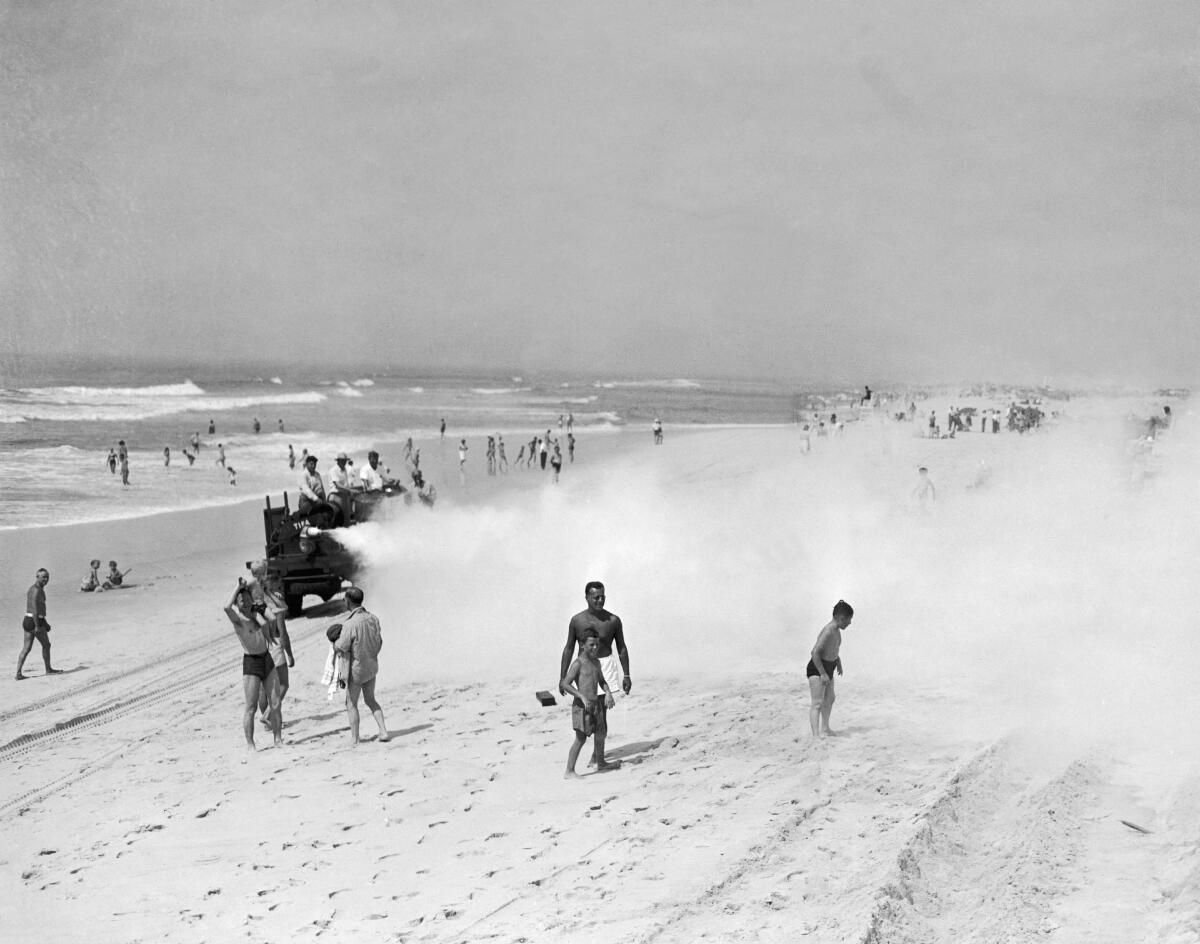
- Share via
This is the June 2, 2022, edition of Boiling Point, a weekly newsletter about climate change and the environment in California and the American West. Sign up here to get it in your inbox.
Hi there! It’s Rosanna Xia, coastal reporter for the Los Angeles Times, filling in for Sammy Roth.
Since I first reported that the Los Angeles coast used to be a DDT waste dump, I’ve found myself reexamining this infamous pesticide that still haunts our world today.
Dichlorodiphenyltrichloroethane was banned in the United States 50 years ago, but startling amounts of this forever chemical are still accumulating in California’s sea lions, dolphins, and even the critically endangered condor. Another study based in Oakland found that DDT’s hormone-disrupting effects are emerging in a new generation of women — passed down from mothers to daughters, and now granddaughters.
So when I heard there was a new book on DDT by Elena Conis, a historian of science and medicine at UC Berkeley, I dove right in.
“How to Sell a Poison: The Rise, Fall, and Toxic Return of DDT” deepened my understanding of this chemical in unexpected ways. Conis uncovered court records and little-known pieces of history, adding complexity to a story that we think we already know. (Spoiler alert: The “bad guys” weren’t always on the wrong side of history, and the “good guys” certainly weren’t perfect.) It’s a gripping examination of corporate influence over science — and how this tried-and-true playbook continues to manipulate public opinion today.
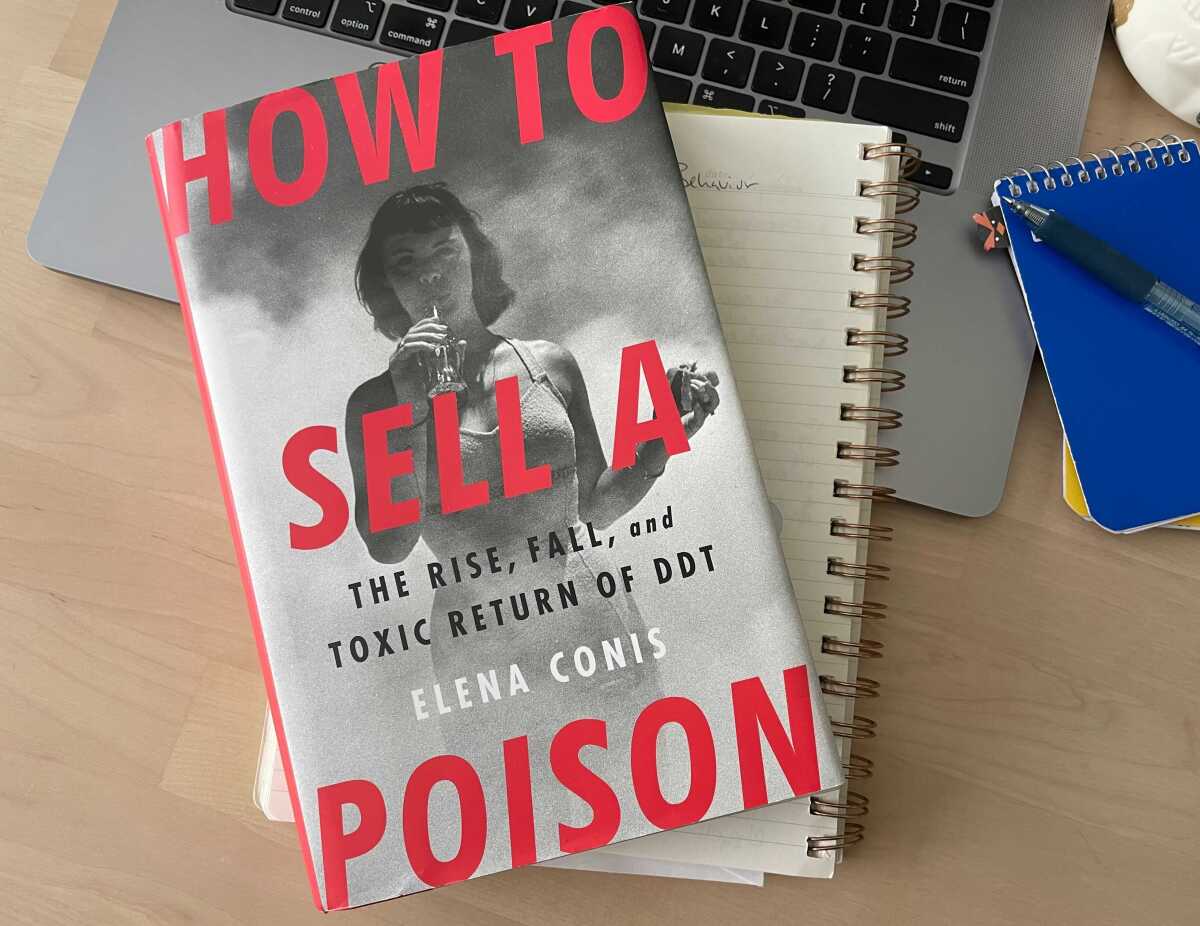
At a time when industries are challenging climate science, and petrochemical companies are under scrutiny for their role in perpetuating all the plastic polluting our planet, Conis has a prescient way of framing the past so as to inform our future. Her reasons for writing this book are many, but one point she shared with me stood out: While doing research for her first book, “Vaccine Nation: America’s Changing Relationship With Immunization,” Conis was intrigued by something that kept popping up in the anti-vaccine movement’s earliest days.
“They were really interested in finding arguments that justified their fear of vaccines,” she said, “and one of their favorite arguments was DDT — that we were told that DDT was safe, and then in the 1960s, we were told that it was bad. … So given that scientists and officials were so wrong about DDT, why should we trust them on vaccines?”
Conis and I have talked for hours about DDT. Here is a snapshot of our conversations:
Me: Let’s discuss the chapters that surprised me. When West Nile hit the U.S. in the late 1990s, for example, prominent people — seemingly out of nowhere — started talking about bringing back DDT. What did you uncover?
Conis: What was happening in the background is important here: There had been increasing concern about the growing number of cases of malaria in sub-Saharan Africa, and malaria scientists had been saying, “Maybe we need to bring back DDT.” One of the reasons they were saying that was because, as Western countries had banned the chemical, it became harder for non-Western countries, especially those dealing with malaria, to get the chemical. … Part of why DDT became so controversial was that it was so clearly effective at protecting public health. During the early years of its use, it protected loads of people from malaria, it stopped typhus outbreaks, and it completely wiped out bedbugs.
So there was this mini-debate brewing in this subfield of global public health. And in the late 1990s, this debate came to the attention of a handful of conservatives, who saw in it a potential way to spread a message to the public that liberal policies should not always be trusted.
Me: Oh boy, what exactly was this message?
Conis: They said, “Hold on a second, we have a chemical that has been banned thanks to U.S. environmentalists, who supposedly are liberals who care about the health and well-being of everybody. But their ban really only protected the birds and has left millions of children in Africa and elsewhere at risk of one of the worst killers of humankind, malaria.”
So these conservative think tanks approached the tobacco industry with this narrative and said, “We propose publicizing this idea, because we think it’s a way to do a couple of things: one, popularize the idea that Western nations shouldn’t be trusted to set global health agendas; two, that environmentalists don’t necessarily have humanitarian ideals in mind. And three, it’ll pit environmentalists and public health folks against each other — and will therefore be a way to divide liberals amongst themselves.”
Me: Why the tobacco industry? What’s in it for them?
Conis: The end goal of all of this was to undermine public support for regulation generally. … The tobacco industry was facing two changes to global treaties at the time that would have regulated tobacco more strictly than it had ever been regulated before at a global level. So the tobacco industry decided to fund this campaign, and this idea really took off.
In the context of West Nile spreading through the U.S., that disease was used as a hook for spreading the argument that not only should DDT be brought back, but that it never should have been banned in the first place — and that its ban meant that liberals and environmentalists should never be trusted to set policy.
Me: This makes me think of all the disinformation campaigns that we see today.
Conis: One of the most obvious parallels is with the fossil fuel industry, and how that industry, as we know very well now, really manipulated public understanding of climate change by promoting its own experts, promoting experts whose research was favorable to their industry, and by casting doubt on any sort of scientific finding that was not in their favor.
But one of the really complicated things that the DDT story shows is that these industries are all working together. The tobacco industry really didn’t need DDT to be brought back — it just needed the case for regulation to be weakened, and that was why the DDT story mattered to them. What that means for the public is that it’s so incredibly hard to know what to trust, and it’s even harder to know who to trust.
Me: Exactly. What struck me about your book is that even though it’s about DDT, it also speaks to so much more than this one chemical.
Conis: DDT is a scapegoat for thinking that we have solved the problem ... but DDT was one of thousands of new chemicals introduced during the chemical revolution of the mid-20th century. So many of these chemicals are still with us, but more importantly, we’ve added thousands more to the list since then.
And if we’re still trying to understand this chemical, this many years later — this chemical that we’ve studied probably better than almost any other chemical ever developed — then what hope do we have for understanding the full effects of all the new chemicals that we’re bringing into our environment and our food supply and our bodies today?
On that note, here’s what else is happening in California and across the West:
THE ENERGY TRANSITION

It’s official: Add Los Angeles to the list of cities responding to climate change by banning natural gas hookups in new construction. The details are still getting hammered out, but this likely means no more gas stoves and heating. As Mayor Eric Garcetti said to Sammy Roth, our Boiling Point host extraordinaire, this transition to all-electric homes is a must: “Our forests are burning, the days are hotter, our floods are more extreme. … Do you want to fight the inevitable, or co-author the necessary?”
Speaking of official, PacifiCorp’s big renewable power line, spanning 416 miles from Wyoming to Utah, is officially a go, and four national laboratories — the Idaho National Laboratory, the National Energy Technology Laboratory, the Pacific Northwest National Laboratory and the National Renewable Energy Laboratory — are converting to net-zero emissions. The Biden administration has also moved forward on the first-ever offshore wind lease sales off California. If this “proposed sale notice” proceeds after the 60-day public comment period, more than 373,000 acres off Morro Bay and Humboldt could be deployed to generate what officials say could be enough power for more than 1.5 million homes. Michael Doyle at E&E News has the details.
In other energy news, European Union leaders agreed this week to impose a partial embargo of Russian oil. This watered-down embargo, as Lorne Cook and Samuel Petrequin report for the AP, covers only Russian oil brought in by sea — allowing a temporary exemption for imports delivered by pipeline. The EU Council president said this agreement covered more than two-thirds of oil imports from Russia, “cutting a huge source of financing for its war machine.”
The cost of gas, by the way, continues to complicate things. In rural California last week, where commutes are long and gas prices have been the most expensive in the nation, the average price per gallon has topped $7. And my colleague Ronald D. White on our Business desk wrote this insightful explainer on how record diesel prices have led to inflation in hidden ways. Walmart, for example, owns a fleet of 7,400 diesel trucks and ended up spending $160 million more than forecast for U.S. fuel in the first quarter of this year.
WATER
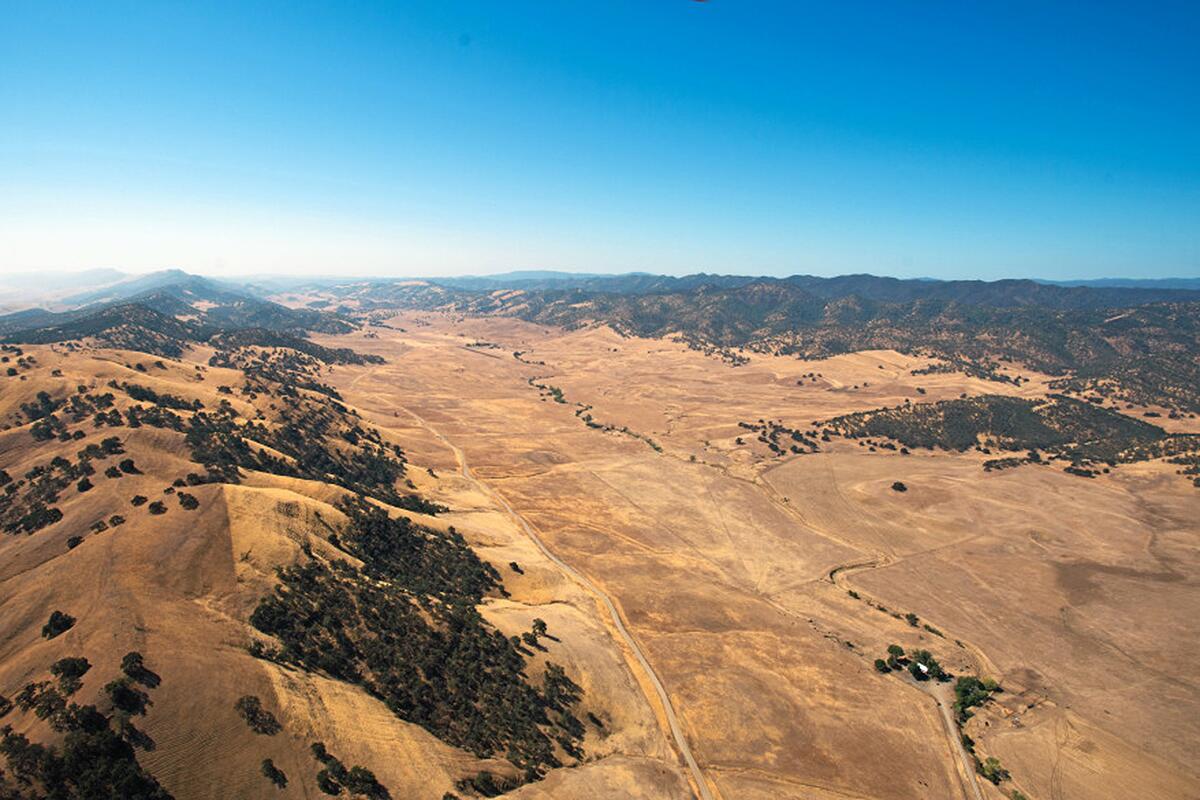
With great drought comes big talk (again) of building more dams: A long-dead proposal to build a massive reservoir off the Sacramento River has been resurrected once again. My colleague Louis Sahagún breaks down this latest controversy. Meanwhile, our water reporter Ian James reports that tribal nations and environmental groups are calling on California to leave more water in the state’s most critical rivers and send less to “large-scale agricultural interests.” The deterioration of the Sacramento-San Joaquin River Delta, they said, has links to the state’s troubled legacy of racism and oppression of Indigenous people.
By the way, there are entire towns in California that have sunk nearly a foot in just one year from groundwater depletion — check out this map by Yoohyun Jung at the San Francisco Chronicle. And Jake Bittle wrote a fascinating piece in Grist on how some farmers in California’s Central Valley, through an obscure water contract, are allowed to pull water from other parts of the valley when they’re short.
In Southern California, more than 6 million people were placed under new drought restrictions this week in an unprecedented effort to conserve water, my colleague Hayley Smith reports. Some have been wondering: Is it even possible for California to build more (and much-needed) housing with such a parched future? My colleague Liam Dillon, who has done thoughtful work covering housing inequities, talked to a number of water experts who said, yes, “if we do it efficiently and smartly, we can manage this.”
There’s also a pivotal election coming up on June 7 at the Imperial Irrigation District — a powerful but fractious agency that controls some of the oldest and largest rights to water from the Colorado River. Three out of five seats on its board of directors are up for grabs, and Janet Wilson at the Desert Sun is keeping close tabs.
And across the West, the federal government agreed last week to pay the Navajo Nation more than $210 million for clean drinking water infrastructure — resolving longstanding Navajo claims to water rights amid an intensifying drought. Amy Joi O’Donoghue covers this historic agreement in the Deseret News.
EARTH
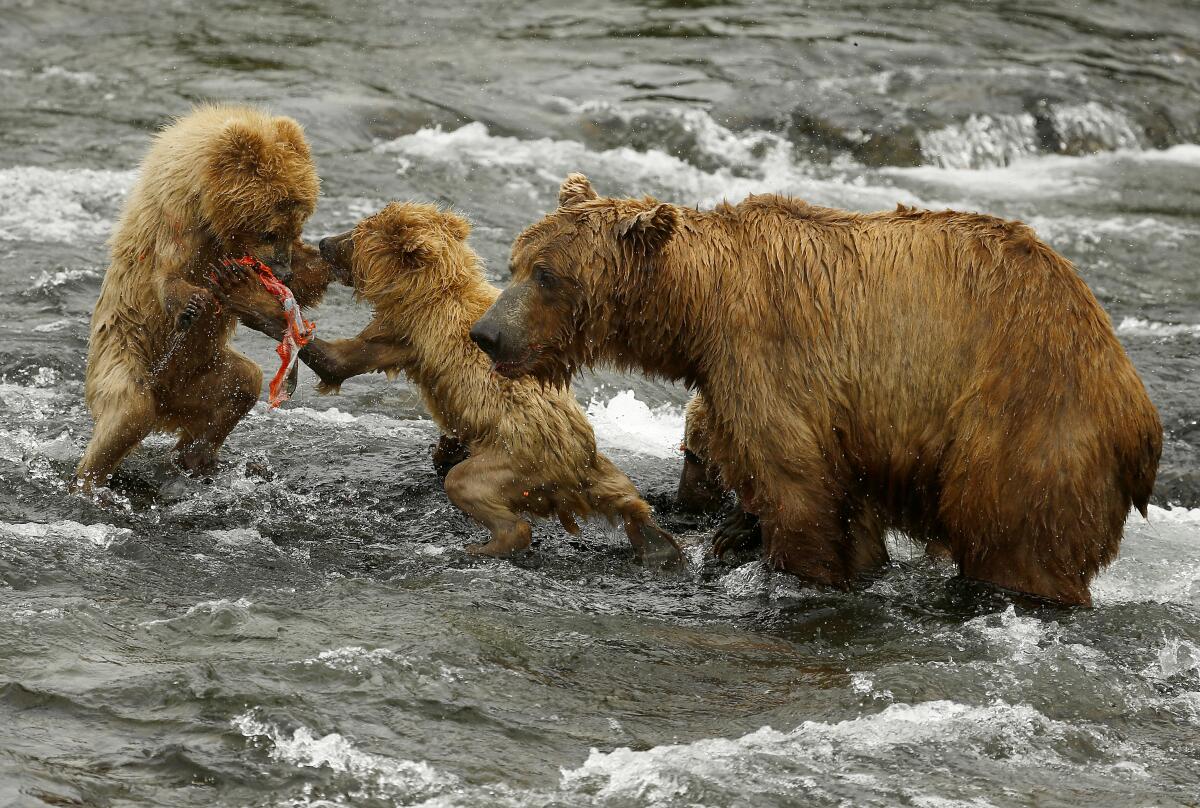
Disputes over the Pebble Mine project at the headwaters of Bristol Bay, Alaska, might be nearing an end. A new waste disposal ban proposed by the U.S. Environmental Protection Agency for the watershed, which sustains the world’s largest run of wild sockeye salmon, would effectively kill this project. The metals that the Pebble Mine would extract are estimated to be worth $300 billion, Coral Davenport reports in the New York Times.
The Interior Department is distributing $33 million to plug and clean up orphaned oil and gas wells on public lands, including in California and Utah. In case you missed it, I still think about this investigation from 2020 by Mark Olalde and Ryan Menezes on the hundreds of deserted oil wells that haunt Southern California with toxic fumes and enormous cleanup costs. Alexandria Herr also published an eye-opening analysis in Capital & Main on all the still-active wells plaguing lower-income communities in the state, and Wilson reported in the Desert Sun that another oil well was discovered leaking methane in Bakersfield over Memorial Day weekend. That’s the 14th well discovered in the last two weeks.
In other U.S. Interior news, NPR reports that the management of more than 18,000 acres of undeveloped land in northwest Montana, including a bison range, has been transferred back to the Confederated Salish and Kootenai Tribes. Returning management of this land is a culmination of Native peoples’ resilience and the Biden administration’s commitment to honor treaty obligation, Interior Secretary Deb Haaland said.
AND FIRE

What an inspiring dispatch from our wildfire reporter, Alex Wigglesworth, on efforts to rebuild Greenville from the ashes of the Dixie fire. The second-largest wildfire in California history decimated this small town, its center now a grid of bare lots and piles of debris. But residents hope to rebuild using wood from charred trees — and create a more sustainable economy than the one they had before.
The largest wildfire in New Mexico history, formed when the Calf Canyon and Hermits Peak fires merged, have both been traced to planned burns set by the U.S. Forest Service, the New York Times and USA Today report. The fire has destroyed at least 330 homes and forced thousands of people to evacuate over the last two months. Planned burns, also known as prescribed fires, are an important fire prevention tactic. It is rare for them to grow out of control, but as Alex reported in another recent story, keeping up with all the prescribed fire projects across the West has been no easy task.
LONG LIVE THE OCEAN
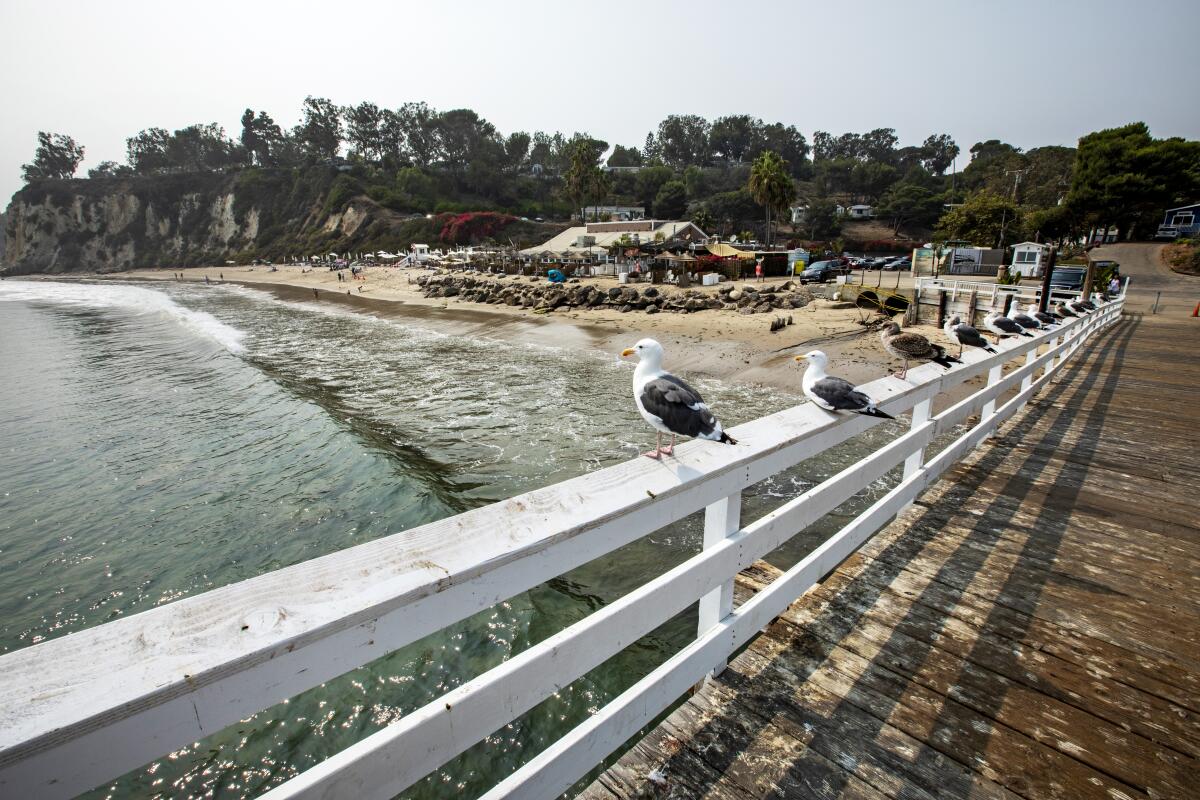
This newsletter wouldn’t be complete without some coastal facts: Please enjoy reading about guano, a.k.a poop specifically from seabirds, as a valuable fertilizer that has been used for thousands of years. Hakai Magazine explains the multimillion-dollar importance of this “white gold” that can boost fish stocks and coastal economies. These poop deposits could also be nurturing important ecosystems that would be left high and dry if our gulls and pelicans were to disappear, according to this Science Friday episode.
And before Rachel Carson took on DDT in 1962 with “Silent Spring” and ignited the modern environmental movement, she was writing about the wonders of the ocean. A marine biologist by training, Carson penned three books about underwater creatures, the tides and the still-unfathomed depths of the sea. I was delighted to discover that these books were recently re-released as “The Sea Trilogy,” which Anelise Chen writes about in the Atlantic with retrospective awe.
ONE MORE THING
For those who’ve heard me on “Masters of Disasters,” a miniseries on the L.A. Times podcast, you already know I’m one cheesy joke away from losing all my friends.
That said, I’m still thinking about this job posting that recently made the rounds: The U.K. Antarctic Heritage Trust, for the first time since the pandemic, is looking for someone to help run the world’s most remote post office. It’s a five-month gig, and as part of the job, you’re also responsible for conducting a penguin count of the Gentoo colony on Goudier Island.
I don’t qualify for a number of reasons, but I still wrote a cover letter. It goes something like this:
To whom it may concern:
How do you count the number of penguins in Antarctica?
A South POLL.
Alright, that’s it for this week’s Boiling Point! Thank you for supporting our environmental journalism (and my terrible puns). If you aren’t a subscriber already, here’s my plug to subscribe to the Los Angeles Times.






